Joomla Web Hosting Secure Configuration and Caching
Configuring a Joomla hosting environment effectively is crucial for ensuring security and performance. In this post, we will explore the essential aspects of secure configuration and caching that every Joomla user should consider.
Server Requirements
Before setting up Joomla, it’s essential to ensure that your server meets the necessary requirements. The following are the basic server requirements for Joomla:
– **PHP**: Version 7.2 or higher (PHP 8.0 is recommended for optimal performance)
– **MySQL**: Version 5.1 or higher, or PostgreSQL
– **Web Server**: Apache or Nginx is recommended
– **HTTPS Support**: SSL certificates should be enabled to secure data transmission
An adequate server environment not only supports Joomla’s functionalities but also enhances security and performance. You can check Joomla’s comprehensive [hosting and server requirements](https://docs.joomla.org/Security_Checklist/Hosting_and_Server) for more details.
Enable and Tune Joomla Cache
Caching is an essential component in improving the performance of your Joomla site. It helps reduce server load and increases page load speeds. Here’s how to enable and fine-tune caching:
1. **Enable Caching**: Go to the Joomla Administrator panel, navigate to System → Global Configuration → System, and set the Cache Settings to ‘ON’.
2. **Cache Time**: Adjust the cache time to a suitable duration depending on your website’s content update frequency. A longer cache time can enhance performance but may serve outdated content.
3. **Caching Method**: Consider using the ‘File’ caching method for simplicity, or ‘Database’ for more dynamic sites.
For more in-depth guidance on caching, consult the Joomla [caching documentation](https://docs.joomla.org/Cache) which provides additional strategies for optimizing cache settings.
HTTPS and HSTS
Securing your Joomla site with HTTPS is essential not only for data security but also for SEO. Implementing HSTS (HTTP Strict Transport Security) can further enhance your site’s security.
– **Obtain an SSL Certificate**: You can acquire an SSL certificate from various providers or through your hosting service.
– **Redirect HTTP to HTTPS**: Update your .htaccess file to redirect all traffic from HTTP to HTTPS automatically.
– **Enable HSTS**: Add a header in your .htaccess file to enforce HSTS, ensuring browsers only connect via HTTPS.
This layered approach to security will protect user data and improve trust in your website.
Recommended .htaccess Rules
The .htaccess file is a powerful tool for enhancing the security of your Joomla site. Here are some recommended rules that you should consider implementing:
– **Disable Directory Listing**: Prevent users from viewing directory contents.
“`apache
Options -Indexes
“`
– **Protect Sensitive Files**: Restrict access to configuration files.
“`apache
Order Allow,Deny
Deny from all
“`
– **Enforce HTTPS**: Redirect all traffic to HTTPS.
“`apache
RewriteEngine On
RewriteCond %{HTTPS} off
RewriteRule ^ https://%{HTTP_HOST}%{REQUEST_URI} [L,R=301]
“`
By applying these rules, you can significantly improve the security posture of your Joomla site. For more .htaccess examples focused on security, visit the Joomla [htaccess examples](https://docs.joomla.org/Htaccess_examples_%28security%29) page.
Backup and Update Strategy
Regular backups and updates are critical for maintaining a secure Joomla site. Here’s a strategy to consider:
– **Regular Backups**: Use tools like Akeeba Backup or your hosting provider’s backup solutions to create regular backups. Schedule backups weekly or daily, depending on your site’s activity.
– **Update Joomla and Extensions**: Regularly check for updates to the Joomla core and any installed extensions. Keeping them updated minimizes vulnerabilities.
– **Test Restore Process**: Periodically test your backup restoration process to ensure that you can recover your site if necessary.
Image and Asset Optimization
Optimizing images and other assets is essential for improving site performance. Here are some tips:
– **Image Compression**: Use tools like TinyPNG or ImageOptim to reduce image sizes without losing quality.
– **Use Correct Formats**: Use modern formats like WebP for web images to decrease file sizes.
– **Leverage Browser Caching**: Adjust your .htaccess file to set expiration headers for images and assets, encouraging browsers to cache these files.
These optimization techniques can significantly enhance loading times and user experience.
Common Pitfalls
When configuring Joomla hosting, it’s easy to overlook some critical aspects. Here are common pitfalls to avoid:
– **Neglecting Updates**: Failing to keep Joomla and its extensions updated can expose your site to vulnerabilities.
– **Ignoring Security Measures**: Not implementing security measures such as .htaccess rules may leave your site vulnerable to attacks.
– **Insufficient Backups**: Relying on infrequent or no backups can lead to data loss in case of a failure.
By being aware of these pitfalls, you can better prepare your Joomla site against potential issues.
Conclusion
Configuring Joomla hosting securely and effectively requires attention to several critical areas, including server requirements, caching, security practices, and optimization strategies. By following the guidelines outlined in this post, you can enhance the performance and security of your Joomla site, ensuring a better experience for your users.
References
- Joomla Security Checklist: Hosting and Server
- Joomla Cache Documentation
- Joomla .htaccess Examples for Security
- MDN Web Docs: Caching
References
Get epic product battles straight to you! 🥊 📦 ![]()
